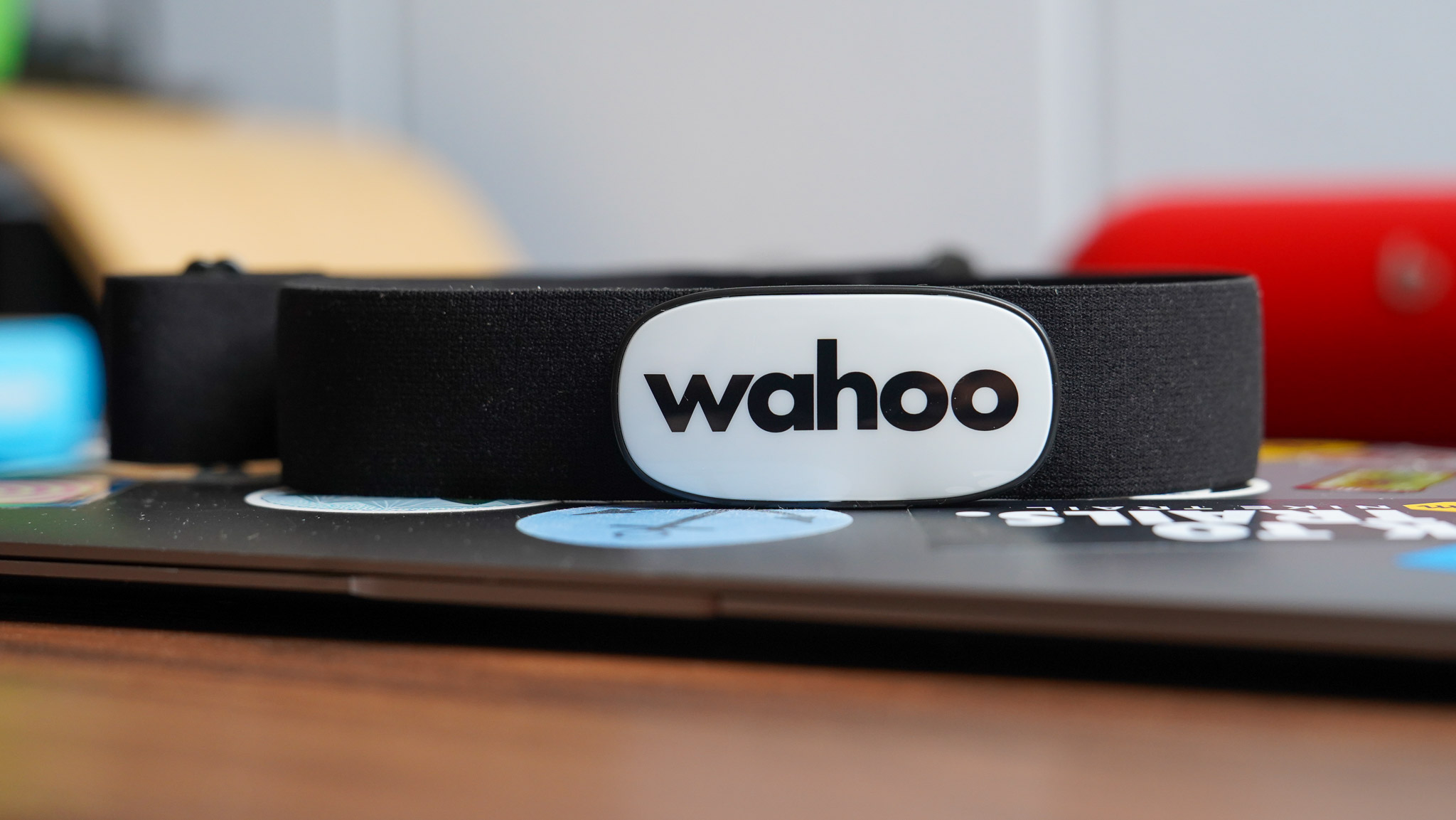
It’s been a few years since Wahoo released a new heart rate monitor, so believe me, I was excited to test and review the new Trackr Heart Rate. It’s the very first heart rate monitor with a rechargeable battery from a respectable company, so there’s a lot to be happy about.
The Trackr Heart Rate is an interesting concept. It’s not an update to 2020’s Tickr X Gen 2; it's more of a soft reset of Wahoo’s wearable lineup. It nails the basics but does nothing else, which is to say it’s an accurate accessory for tracking and logging heart rate data directly into apps or running wearables and multisport watches.
Considering how straightforward the Wahoo Trackr Heart Rate is, there are quite a few things to talk about, like packaging, the device’s rechargeable nature, the totally new chest strap design, the lack of advanced features and more.
One thing is for sure: the Wahoo Trackr Heart Rate is an excellent cycling/running accessory, which makes me excited to see what the brand has in store for the rest of the year and beyond. Fingers crossed for the update on the Wahoo Elemnt Rival (Trackr Elemnt Rival?) update coming soon.
Wahoo Trackr Heart Rate review
Price and availability
The Wahoo Trackr Heart Rate was launched in June 2024 and is available to buy now directly from Wahoo US, Wahoo UK and Wahoo AU for a recommended price of $89.99/ £79.99/ AU$149.95. Previous Tickr models came with one strap option, and so does the Trackr Heart Rate. It comes in one colour only.
Specifications
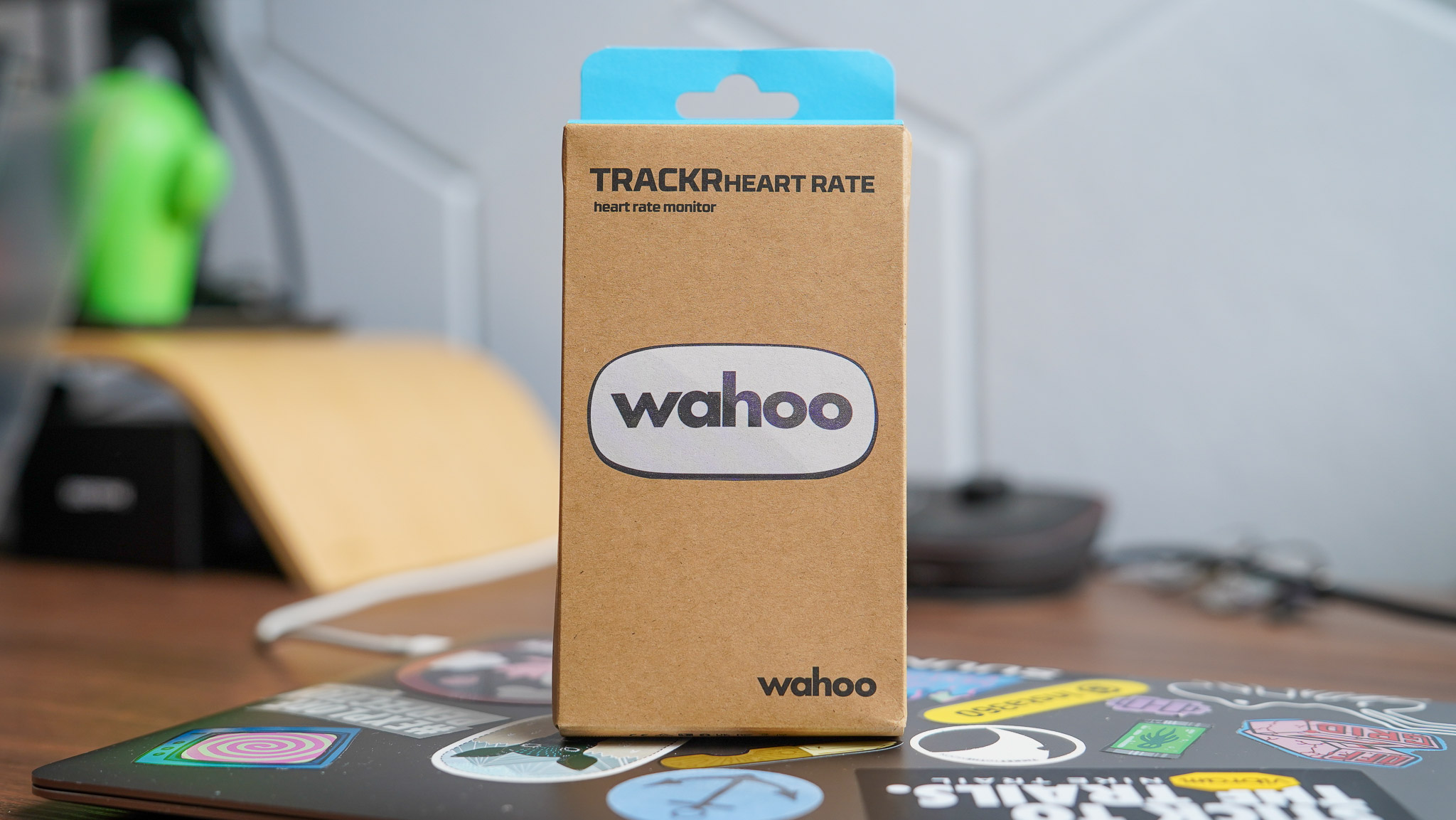
- Pod weight: 11g / .39oz
- Strap weight: 40g / 1.4oz
- Strap: Adjustable, fits up to 127cm/ 50in chest circumference
- Battery: rechargeable
- Battery life: over 100 hours
- Sweatproof: yes
- Water rating: IPX7 (can be submerged in water up to one meter for 30 minutes without any damage)
- Connectivity: Multi-BLE, ANT+
- Integrations: Wahoo, Strava, Peloton, Zwift, Apple Watch, Adidas Running, Nike Run Club
Design and build quality
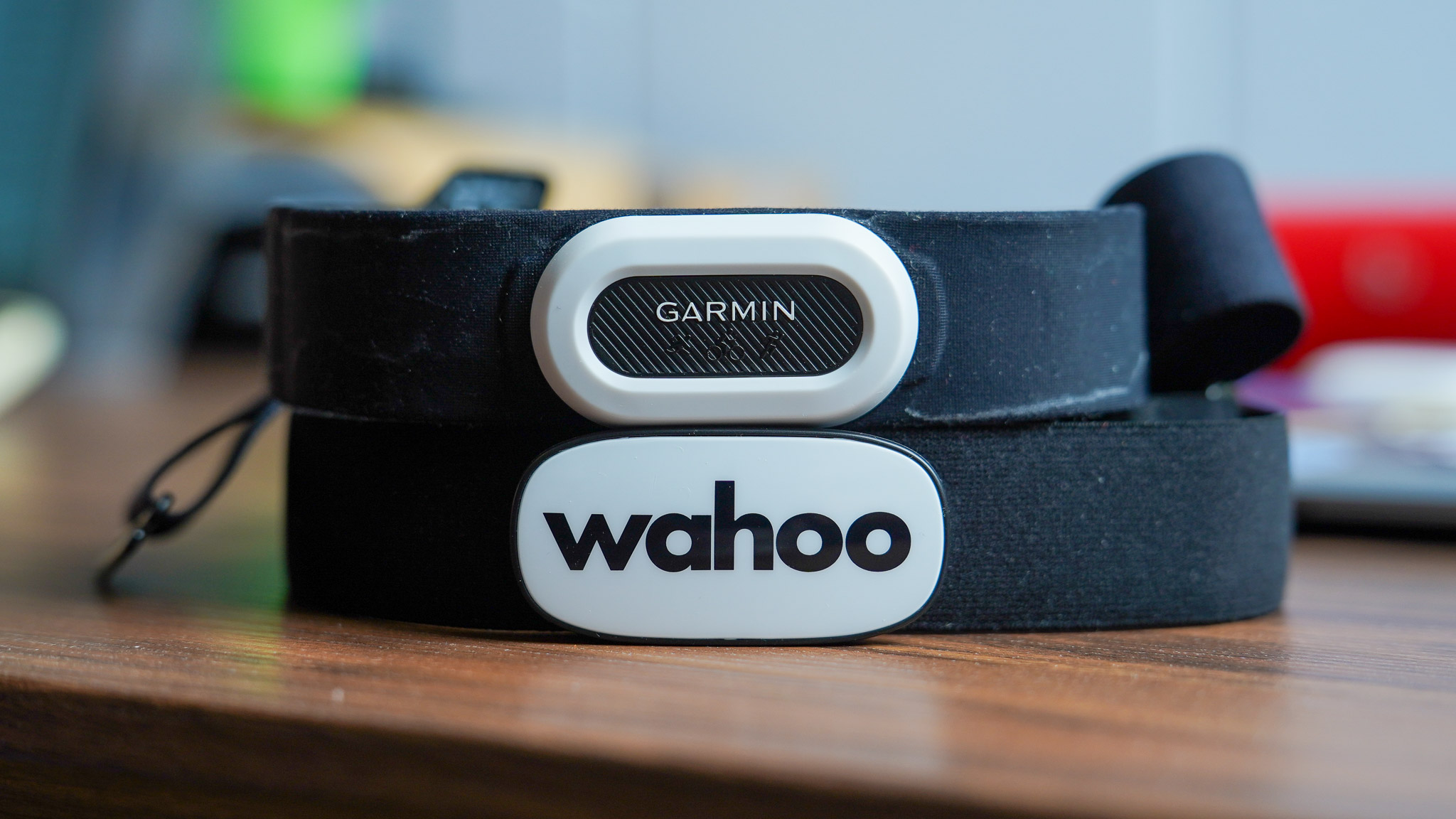
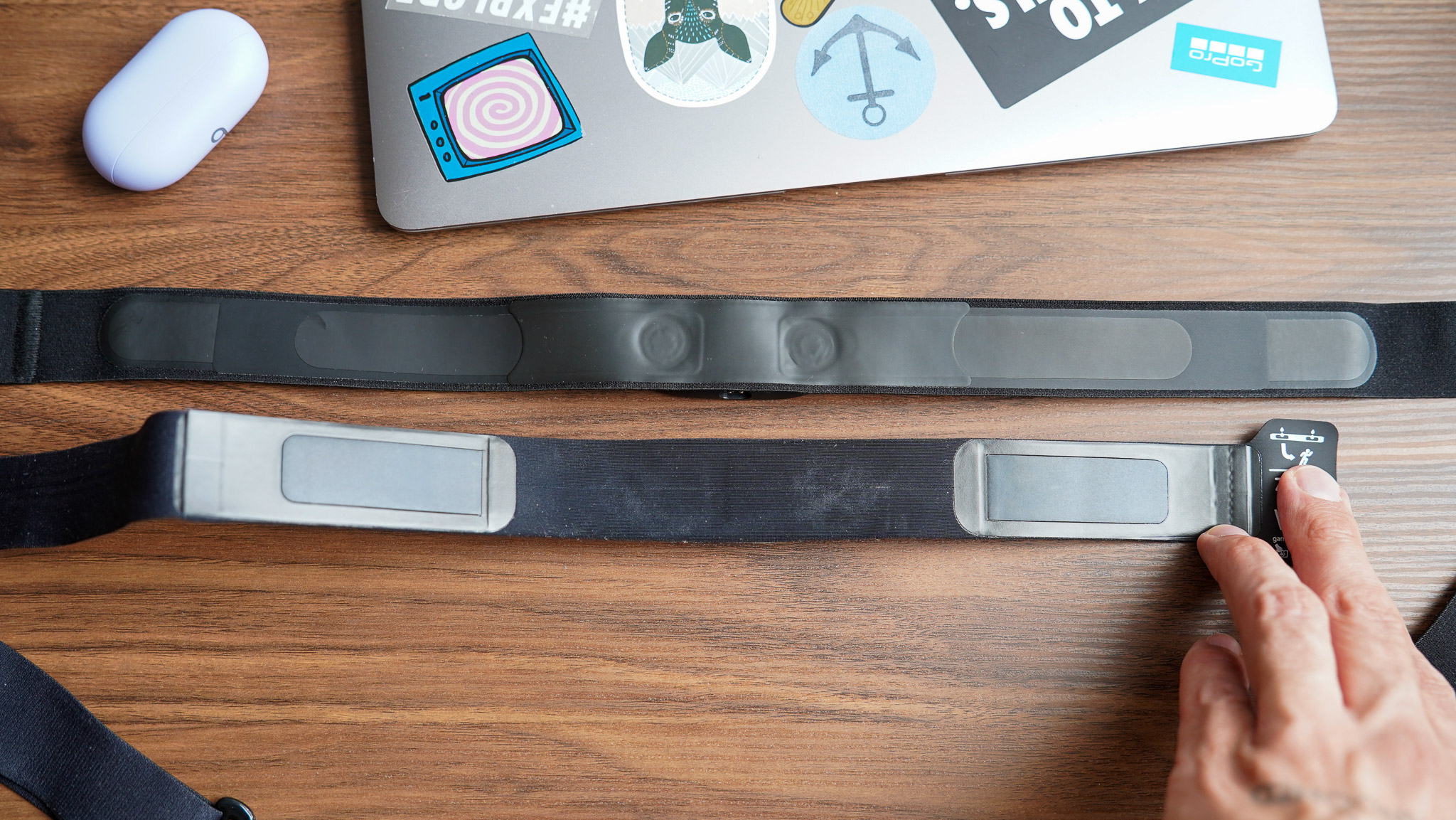
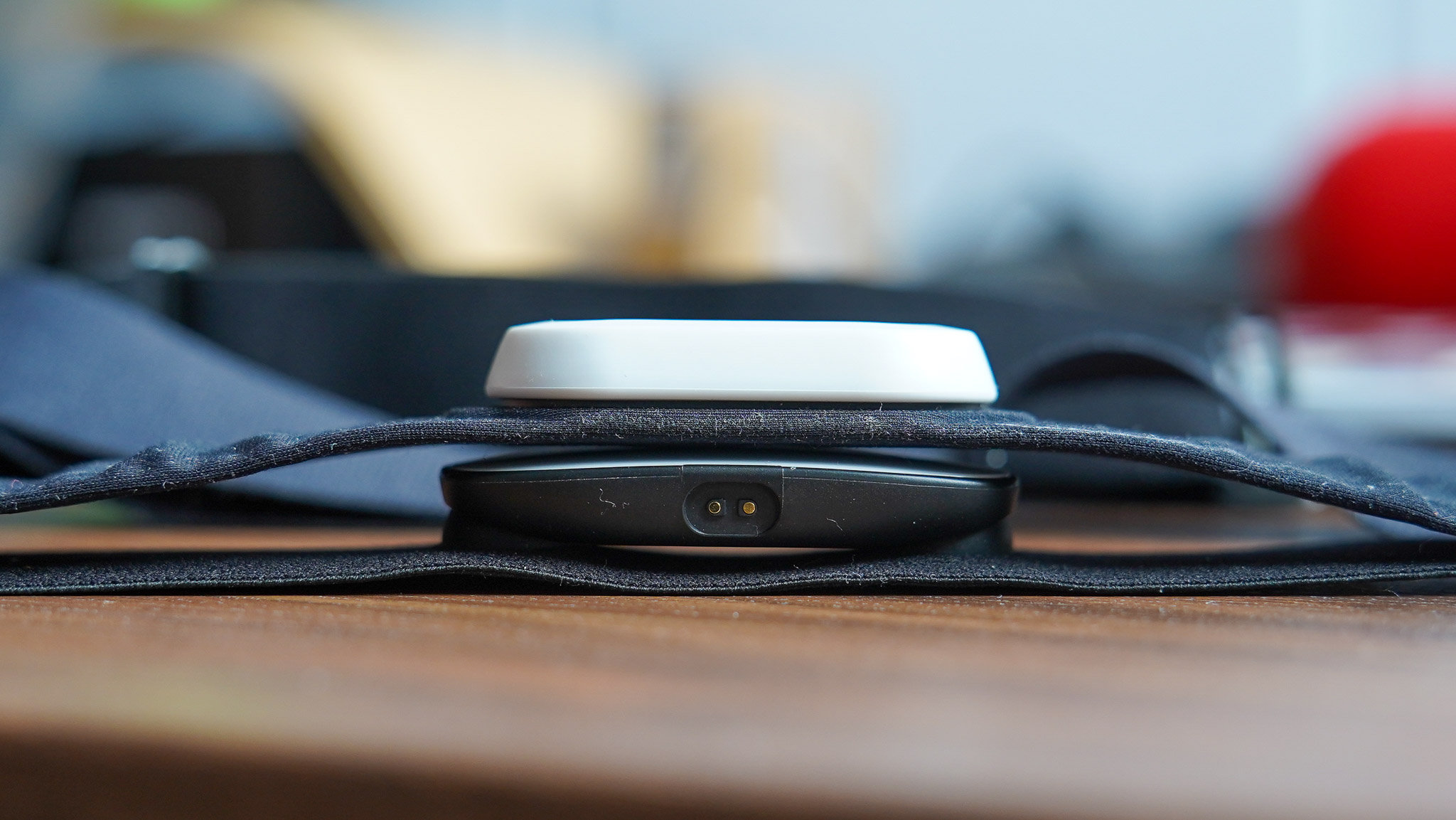
Wahoo says they completely restructured the Trackr Heart Rate from the ground up, including the internal components and, of course, the rechargeable battery.
The 11g (.39oz) pod looks more or less what you’d expect from a heart rate monitor: it has a flat, oblong shape with two holes on the back to clip onto the chest strap.
Thanks to its IPX7 rating, the Trackr Heart Rate can be used in water. However, it has no internal memory, and since Bluetooth signals don’t travel in water, it can’t be used for triathlon training.
You can wear the monitor, but it won’t start transmitting data until you’re out of the water. Plus, Wahoo say they didn’t test the Trackr Heart Rate for pool swimming (e.g. prolonged exposure to chlorine, etc.). Long story short, if you want a heart rate monitor for swimming, this isn’t for you.
One of the biggest updates is the rechargeable battery. The charging port is at the bottom of the pod, and the charging cable is included in the box. Wahoo says the cable is the same as Shokz use for its bone-conduction headphones.
The box is also important: it’s been redesigned for easier recyclability and is smaller, so it takes less effort to transport.
One thing Wahoo very kindly added to the back of the Trackr Heart Rate is the pod’s ID, which makes it easier to locate it when you’re in a group run/ride setting.
The strap has also been updated, with larger electrodes and more surface area. This ensures the pod can collect data, no matter how twisted the strap might become during exercise.
The combined weight of the Wahoo Trackr Heart Rate is 51g (1.8oz), which includes the 11g pod and the 40g strap. All in all, a pretty lightweight package.
Performance and comfort
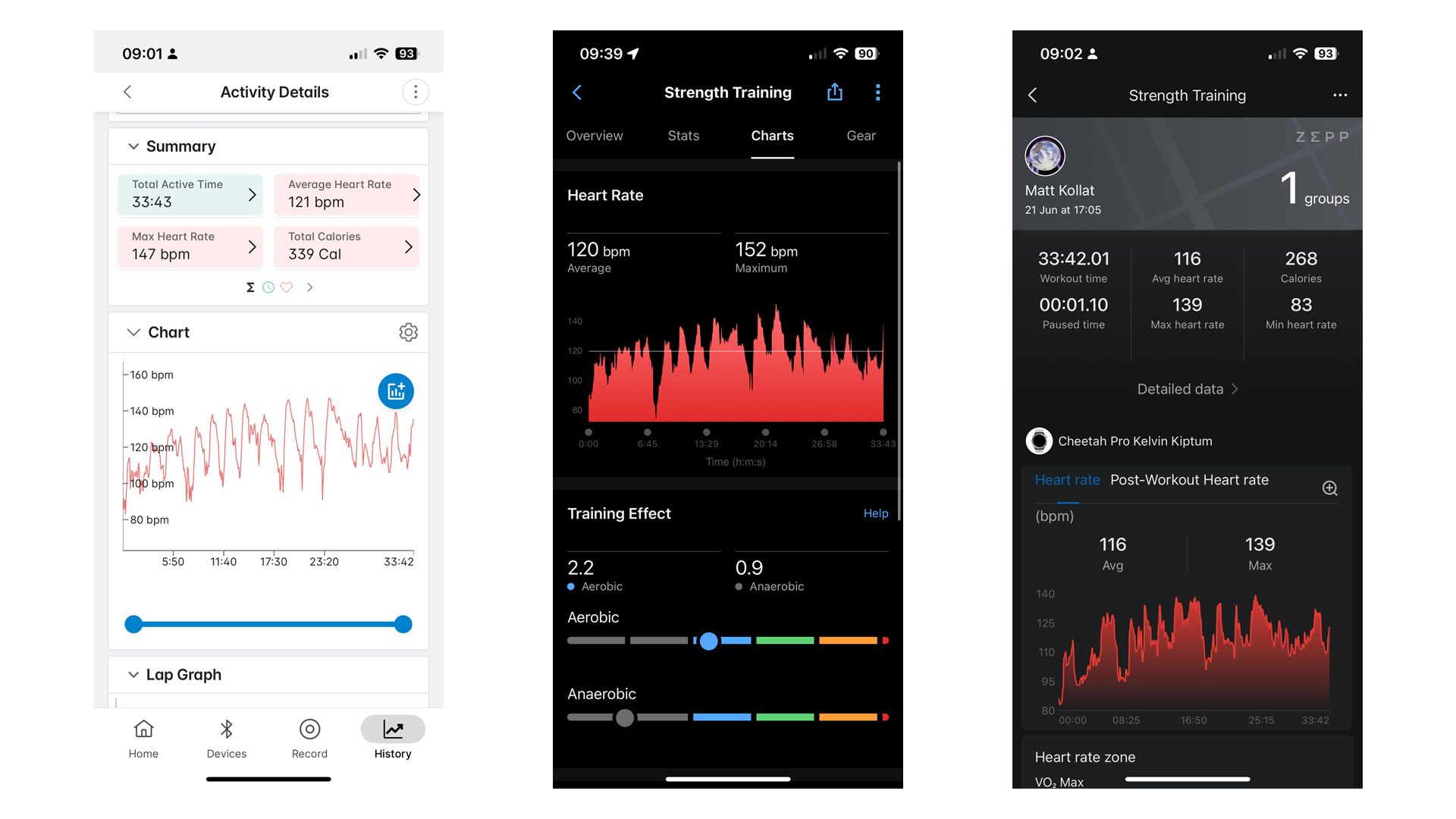
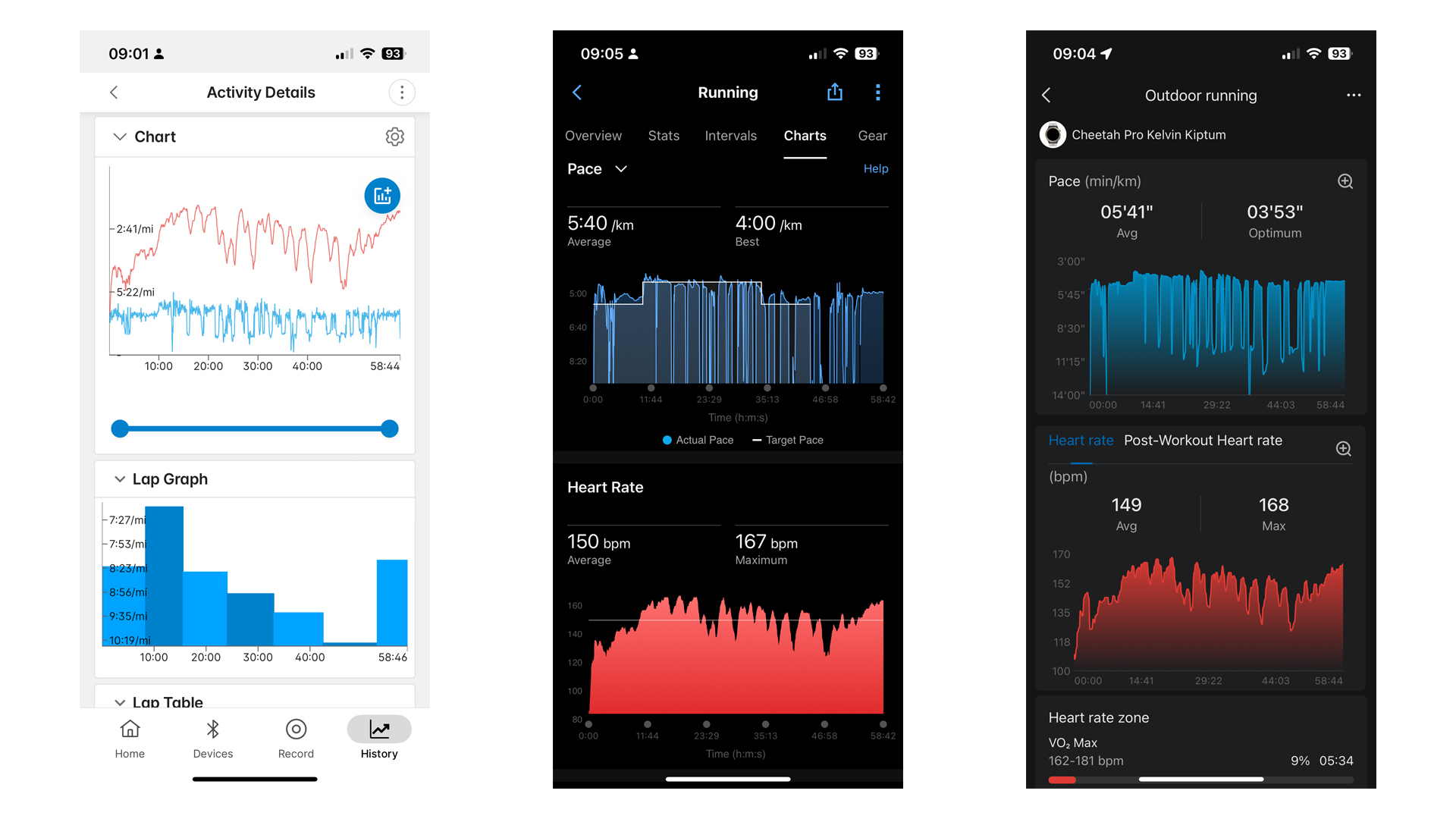
I used the Wahoo Trackr Heart Rate for runs and strength workouts, and the data seems to be on point compared to the Garmin Forerunner 965 and the Amazfit Cheetah Pro (the latter of which I was also testing during the Wahoo review period).
The curves of the Wahoo and the Garmin are similar, but the heart monitor definitely performed better under strength workout conditions (as expected). The heart rate spikes are more visible; you can see perfectly when the sets started and finished.
I recorded the workouts straight into the Wahoo app, so I have multiple sources of heart rate data to compare. This means I’m yet to see how the Trackr Heart Rate feeds heart rate variability (HRV) data into wearables and fitness equipment.
That’s right: the device can transmit R-R intervals to give you the HRV reading in a compatible app. This is pretty cool; I can’t wait to see how my HRV changes during workouts.
From a comfort point of view, I haven’t experienced any chafing or discomfort wearing Wahoo Trackr Heart Rate. The strap is nothing mind-blowing, but it shouldn’t be, either. As long as it disappears as soon as you put it on (this one really does), I’m happy with it.
One grief I have with the HRM is the lack of advanced running metrics. This is a very conscious decision on Wahoo’s behalf; I’m 100% sure we’ll see a Trackr soon enough with running metrics and memory, but this one isn’t that.
Battery life
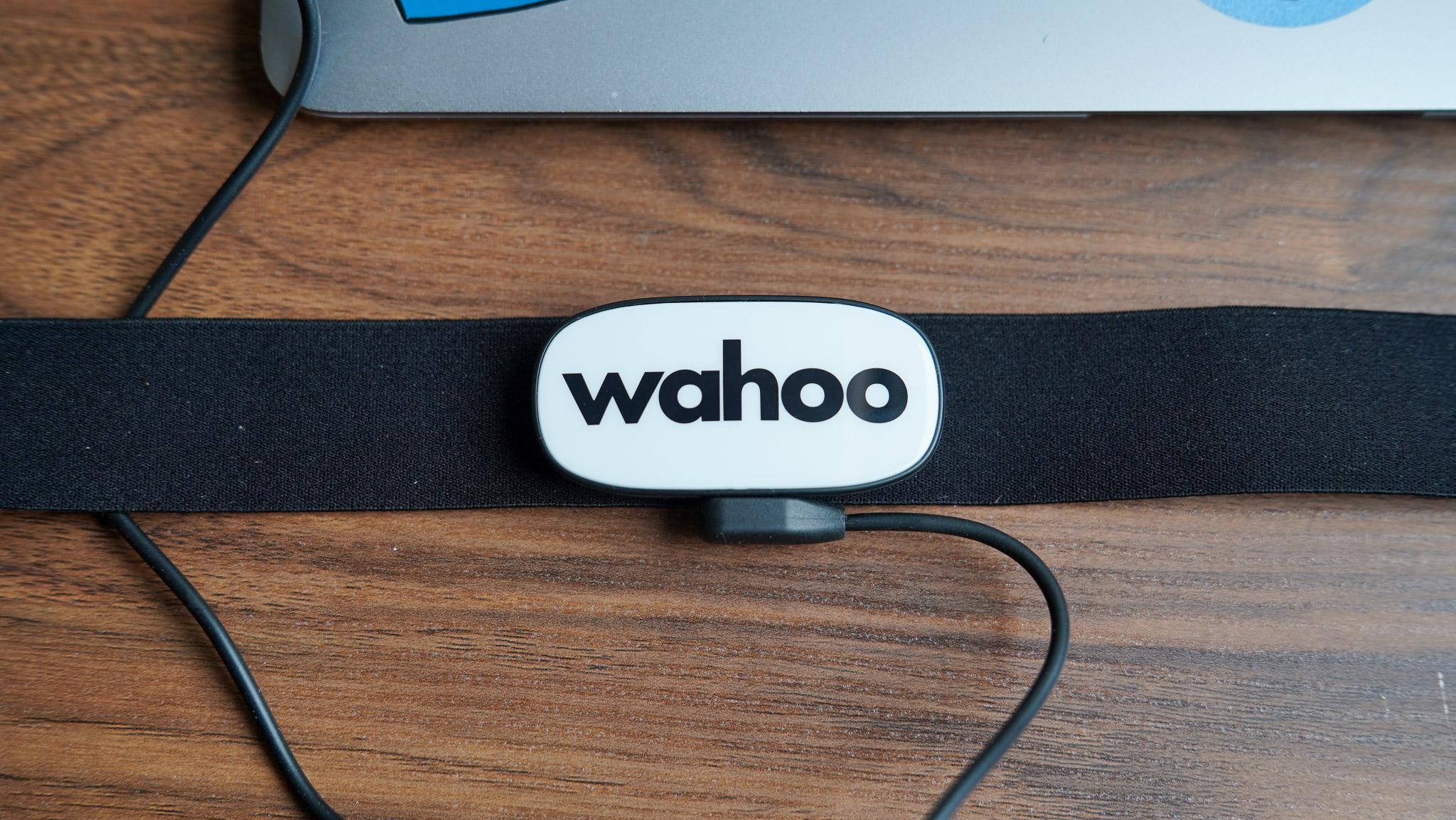
The Trackr Heart Rate is the first heart rate monitor from a major brand to feature a rechargeable battery.
As Wahoo puts it, no matter how careful you are, opening the pod will eventually compromise its integrity, allowing sweat and dirt to seep into and destroy the internal circuits. The Trackr Heart Rate won’t have this issue.
The IPX7-rated Tracker Heart Rate won’t have this issue. It has a 100-hour battery life (under optimal circumstances) and can be charged considerably quickly – it’s not a huge battery, after all.
I haven’t drained the battery yet, but once I do, I’ll update the article with exactly how long it took to charge Trackr Heart Rate.
Verdict
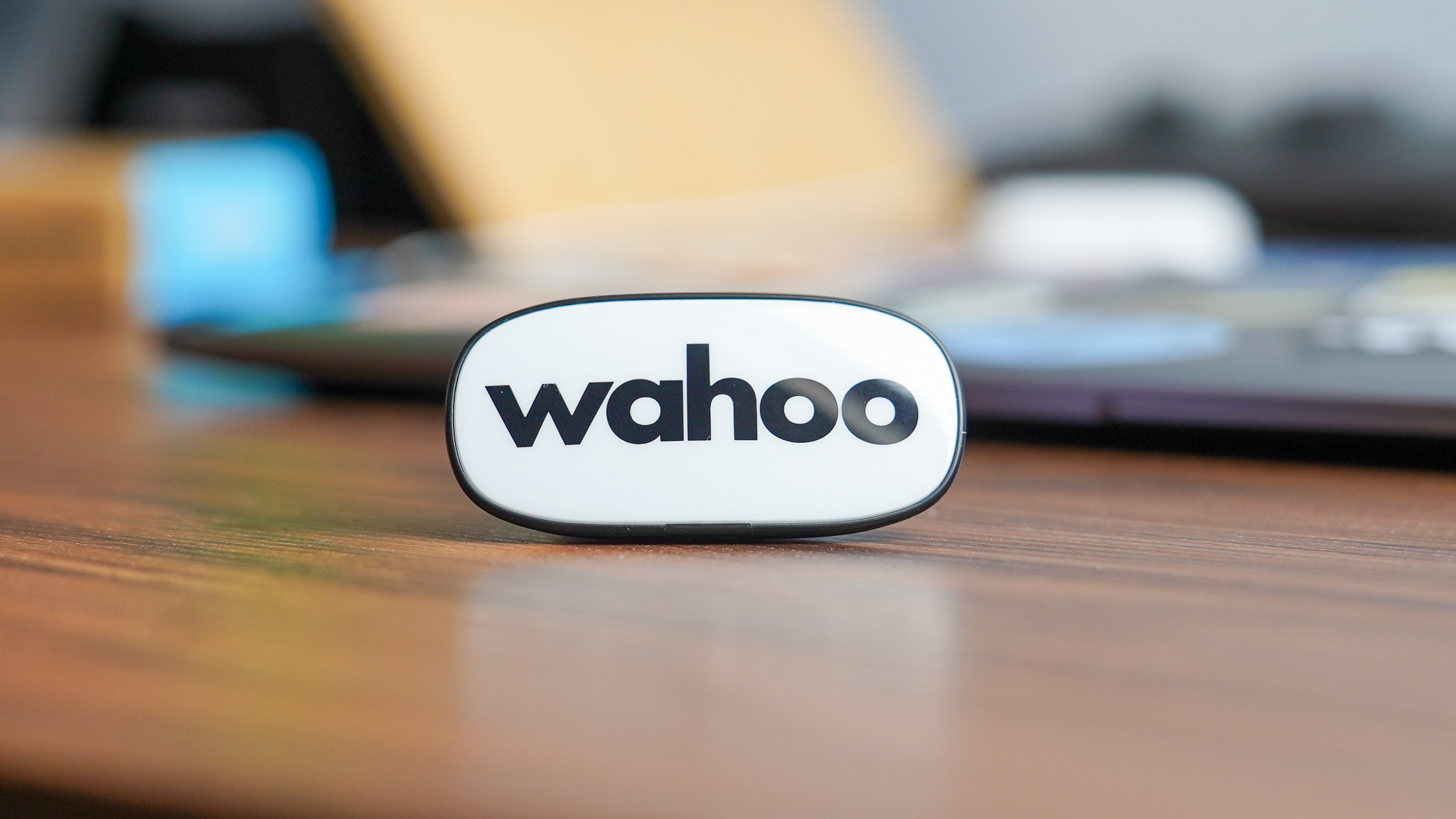
If I had only considered checking if the product delivered what it said on the box, I would have given the Wahoo Trackr Heart Rate the maximum five stars. It’s lightweight, comfortable to wear, and seemingly tracks heart rate with high accuracy—all for two-thirds of the price of the Garmin HRM Pro Plus.
It only received four stars because it simply isn’t the best heart rate monitor. I miss the advanced running metrics, the built-in memory, and other trimmings that would make the Trackr Heart Rate the ultimate accessory for tracking heart rate with high accuracy.
That said, it’s a delightful wearable. Based on what Wahoo told us, I’m 100 per cent sure we’ll see more heart rate monitors launched in the near future, and some of these will have advanced features.
If you’re a cyclist or runner who wants a no-frills heart rate monitor, you should definitely Trackr Heart Rate, especially if you have a Wahoo bike and/or use one of the many compatible apps. Swimmers need not apply.
Also consider
For those craving for more data, the Polar H10 is a good option, especially since it costs the same as the Trackr Heart Rate. The H10 is also renowned for its accuracy and supports various sports with built-in memory for solo workouts. It connects via Bluetooth and ANT+ to multiple devices simultaneously and is suitable for swimming.
The reigning king of heart rate monitors, the Garmin HRM-Pro Plus, can track advanced running metrics and store activity data for syncing post-workout, ideal for serious athletes and Garmin users seeking to refine their technique and gather comprehensive fitness data. Read Tina's full Garmin HRM-Pro review.







